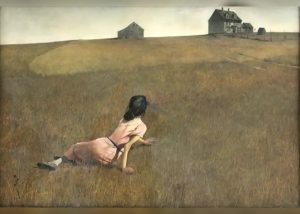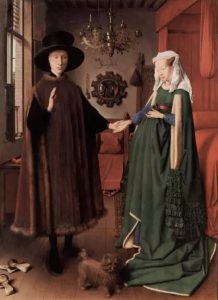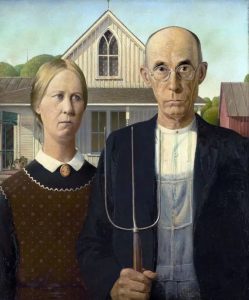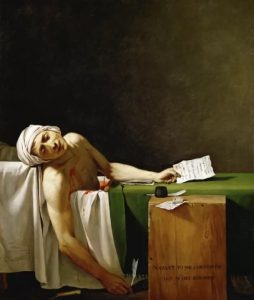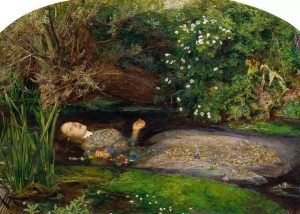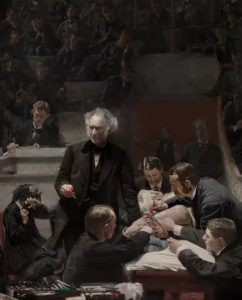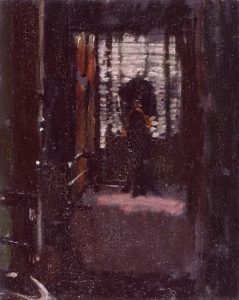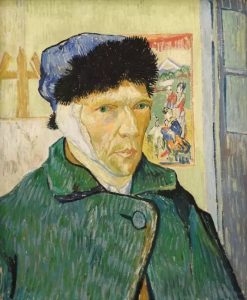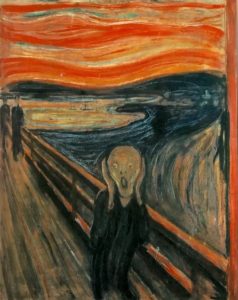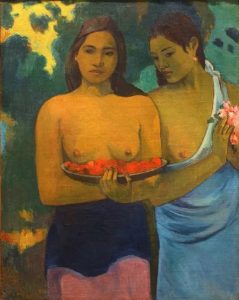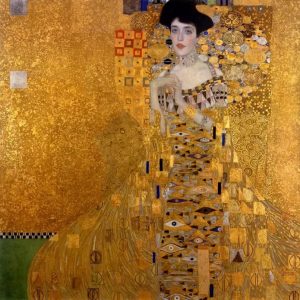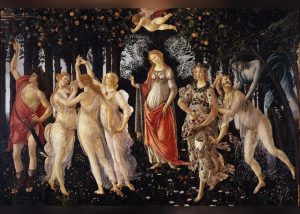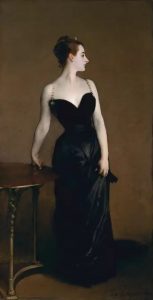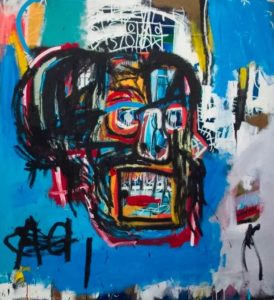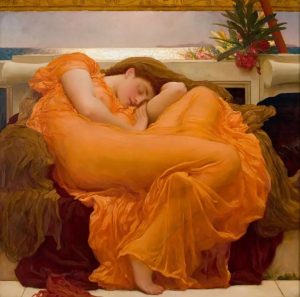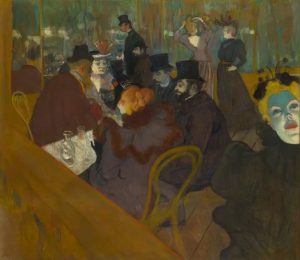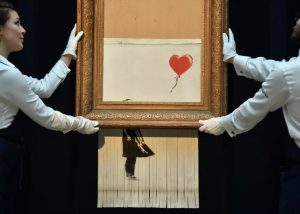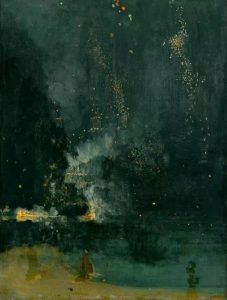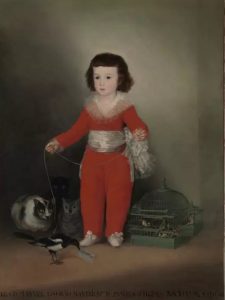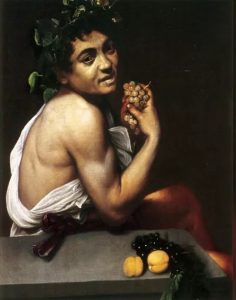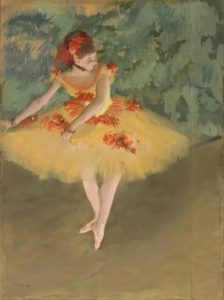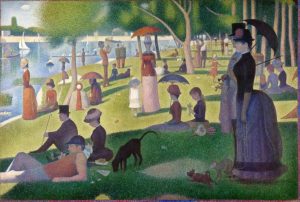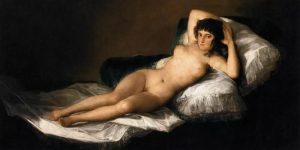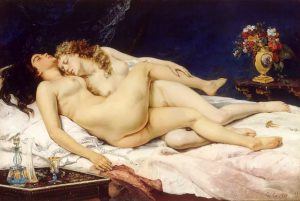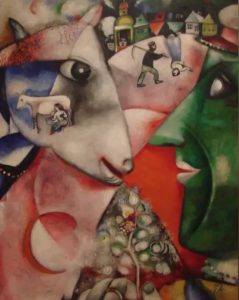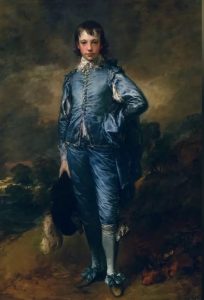Artists & Paintings
Jun 17th, 2024 by JGB
Romaine Brooks
Elisabeth Louise Vigee le Brun [Rhiannon]
Anne Vallayer-Coster [Ray]
Dora Maar
Leonora Carrington
Dorothea Tanning
Dorothea Lange
Sister Gertrude Morgan
Corita Kent
Marisol
Shirin Neshat
Lorna Simpson
Amy Sherald
Judy Chicago [Quinn]
Cindy Sherman
Carrie Mae Weems
Nan Goldin
Julia Margaret Cameron
Evelyn De Morgan
Hilma af Klint
Berthe Morisot [Rachel]
Mary Cassatt
Camille Claudel [Scarlett]
Georgia O’Keefe
Lee Krasner
Elaine de Kooning
Grace Hartigan
Joan Mitchell
Frida Kahlo
Diane Arbus
Helen Frankenthaler
Margaret Bourke White
Francesca Woodman
Alice Neel
Artemesia Gentileschi [Amara]
Elisabetta Sirani
Marie-Guillemine Benoist
Faith Ringgold [Laniya]
Louise Bourgeois
Maria Ambromović
Marie-Denise Villers [Phoenix]
Gwen John
Käthe Kolliwitz
Jacqueline Marval
Sally Mann [Anna]
Agnes Martin
The material below is taken from this site.
A. Christina’s World
– Artist: Andrew Wyeth
– Year: 1948
“Christina’s World” continues to fascinate more than 70 years after it was first painted. The faceless woman lying on the ground was Anna Christina Olson, the neighbor and muse of Pennsylvania artist Andrew Wyeth. While the painting has all the hallmarks of a pastoral, Olson’s pose is not one of romantic languor; she suffered from a muscle-wasting disorder—possibly Charcot-Marie-Tooth disease—and was known to drag herself across the family homestead.
♦
B. Arnolfini Portrait
– Artist: Jan van Eyck
– Year: 1434
Painted by Dutch master Jan van Eyck, this early Netherlandish panel painting is shrouded in symbolism. The elegantly dressed couple are thought to be Giovanni di Nicolao di Arnolfini, and his wife, Costanza Trenta, wealthy Italians living in Bruges. The unusual composition begs several questions. Does the painting celebrate the couple’s wedding, or commemorate some other event, such as a shrewdly negotiated marriage contract? Was the bride pregnant, or simply dressed in the latest fashion? And what are the mysterious figures depicted in the convex mirror? The unorthodox placement of van Eyck’s signature directly above it suggests one of the men may be the artist himself.
♦
– Artist: Grant Wood
– Year: 1930
Grant Wood spent years searching for inspiration in Europe. The work that would make him famous, however, was painted after his return to the heartland. A national icon and leading exponent of regionalism, “American Gothic” depicts what appears to be a Depression-era farmer and his weathered wife. Grant intended the couple to represent father and daughter; in reality, they were neither. The man holding the pitchfork was Wood’s dentist, Byron McKeeby, flanked by the artist’s sister, Nan Wood Graham.
♦
– Artist: Jacques-Louis David
– Year: 1793
The pallid figure bleeding out in Jacques-Louis David’s 1793 neoclassical masterpiece is none other than Jean-Paul Marat, the French revolutionary famously stabbed to death in the bath by political adversary Charlotte Corday. David gravitated toward radical politics, aligning himself with the Jacobin ideologies of Marat and Maximilien Robespierre. In post-revolutionary France, he rose to the position of court painter under Napoléon Bonaparte.
♦
– Artist: Sir John Everett Millais
– Year: 1851-52
Pre-Raphaelite John Everett Millais, in true Pre-Raphaelite fashion, painted directly from life whenever possible. Much of the exuberant foliage found in “Ophelia” can be found in Shakespeare’s “Hamlet” and was painted en plein air. Millais, however, didn’t subject his 19-year-old model, Elizabeth Siddall, to the elements; she reportedly posed for the artist in a bathtub full of water in his London studio.
♦
– Artist: Thomas Eakins
– Year: 1875
Philadelphia artist Thomas Eakins spent a year working on “The Gross Clinic,” which he painted specifically for his hometown’s 1876 Centennial Exhibition. The closely observed work depicts Dr. Samuel Gross and associates operating on a patient’s leg. A stricken woman hiding her face from the open gash has been traditionally identified as the faceless patient’s mother. Sitting behind Gross, to the right of the painting is a self-portrait of the artist. Jurists, shocked by the gory realism, rejected the work, which was eventually housed in a reconstruction of a U.S. Army Post Hospital.
♦
– Artist: Walter Sickert
– Year: 1908
Walter Sickert, noted for his moody portraits and dimly lit domestic interiors, may have harbored a secret darker than his paintings. It has been argued that disconcerting works such as “Jack the Ripper’s Bedroom” and “The Camden Town Murder” may reflect some connection between the artist and the grisly Whitechapel butcher—either as an accomplice or the murderer himself.
♦
– Artist: Vincent van Gogh
– Year: 1889
Vincent van Gogh is famous for having severed his own ear; the strained relationship with fellow post-impressionist Paul Gauguin that precipitated the artist’s self-mutilation is not nearly as well known. Van Gogh spent 1888 working in the South of France and was joined in October of that year by Gauguin. Their friendship deteriorated, and van Gogh didn’t react well to the news of Gauguin’s impending departure. The troubled artist cut off his ear, wrapped in newspaper, and reportedly gave it to a local prostitute for safekeeping. “Self-Portrait with Bandaged Ear” depicts van Gogh in his studio, with the right side of his head wrapped in cloth. In fact, it was a portion of van Gogh’s left ear that was removed, with the inconsistency in the painting arising from the inverted reflection perceived by the artist while gazing in the mirror.
♦
– Artist: Edvard Munch
– Year: 1893
Popularly known as “The Scream,” Norwegian artist Edvard Munch’s expressionist masterpiece is frequently interpreted as a primal response to the excessive pressures of modern life. Originally titled “The Shriek of Nature,” the image was created with an entirely different intent, as related by Munch himself, “One evening I was walking along a path, the city was on one side and the fjord below. I felt tired and ill. I stopped and looked out over the fjord—the sun was setting, and the clouds turning blood red. I sensed a scream passing through nature; it seemed to me that I heard the scream. I painted this picture, painted the clouds as actual blood. The color shrieked.” The iconic painting was stolen from the Oslo National Gallery in 1994; the culprit was apprehended and the painting recovered several months later. Ironically, a 1910 version of “The Scream” was taken in broad daylight from the Munch Museum in 2004. It, too, was eventually recovered despite fears it had been destroyed.
♦
– Artist: Paul Gauguin
– Year: 1899
A leading post-impressionist and frenemy of Vincent van Gogh, Gauguin abandoned his wife and children for a hedonistic life in the South Seas. Admired for over a century for his seemingly innocent portraits of Tahitian women, Gaughin was also a syphilitic sexual predator who molested countless young girls in his Polynesian pleasure palace dubbed “The House of Orgasm.”
♦
– Artist: Gustav Klimt
– Year: 1907
One of a handful of paintings seized by the Nazis from the family home of Ferdinand Bloch-Bauer, this glittering portrait by fin-de-siecle artist Gustav Klimt depicts the Viennese sugar magnate’s wife—art enthusiast and society hostess Adele Bloch-Bauer. After the war, the portrait turned up in the state-run Galerie Belvedere. Maria Altmann, Adele’s niece, spent years fighting for the painting’s return, finally triumphing in 2006. The incredible story was made into a film, “Woman in Gold,” starring Helen Mirren as Altmann. Both patron and muse, Bloch-Bauer is the only sitter Klimt painted twice.
♦
– Artist: Sandro Botticelli
– Year: 1477–1482
Christened “Primavera” by pioneering art historian Giorgio Vasari in 1550, Boticelli’s mysterious masterwork originally lacked a title. Although its precise meaning remains enigmatic, “Primavera” is an allegorical work inspired by classical mythology, depicting the transformation of the nymph Chloris into Flora, the goddess of spring. Commissioned by a member of the powerful Medici clan, it has been suggested that figures in the composition were modeled on members of the family.
♦
– Artist: John Singer Sargent
– Year: 1883–84
John Singer Sargent’s moody portrait of Virginie Avegno Gautreau, the American wife of a French banker, outraged critics when it was first exhibited at the Paris Salon 1884. Sargent had hoped the portrait would make his career. The painting, however, set off a scandal of such magnitude that Sargent exiled himself to England. What was it that had so offended Parisian high society? While the image’s overt sexuality was expected for a mythological heroine and tolerable for a prostitute moonlighting as an artist’s model, it was downright threatening when applied to a woman of their own cast.
♦
– Artist: Jean-Michel Basquiat
– Year: 1982
Jean-Michel Basquiat’s meteoric rise from Brooklyn graffiti artist to critically acclaimed painter is the stuff of legend. The youthful Neo-expressionist lived hard and died at the tender age of 27 from a heroin overdose. In December 2018, one of Basquiat’s untitled works set a record at Sotheby’s, selling for a $110.5 million. The staggering selling price spurred the owner of another Basquiat painting to have the work authenticated. An ultraviolet light examination revealed that the painting included elements drawn by Basquiat in invisible ink.
♦
– Artist: Sir Frederic Leighton
– Year: 1895
“Flaming June,” of the languid beauty in the transparent orange dress, was painted by esteemed British artist Frederic Leighton at the close of the 19th century. The painting disappeared soon after, only to reemerge in the early 1960s when it was supposedly discovered in a chimney by a laborer working at a construction site. Considered highly unfashionable at the time, the painting failed to make reserve when it came to auction. It was acquired soon after by Puerto Rico’s Museo de Arte de Ponce, where it remains to this day.
♦
– Artist: Henri de Toulouse-Lautrec
– Year: 1892–95
Born to wealth and privilege, Toulouse-Lautrec abandoned his aristocratic roots in favor of the working-class Montmartre district and its colorful nightlife. The artist appears to have been afflicted with a genetic disorder affecting growth and bone development; he walked with a cane and reached an adult height of just 4 feet, 8 inches tall. Taunted for his physical appearance, he self-medicated with alcohol, notably absinthe. “At the Moulin Rouge” depicts the world in which Toulouse-Lautrec felt most at ease. In addition to entertainers such as red-headed chanteuse Jane Avril and dancer May Milton (with the verdigris-tinted complexion), the piece also includes a self-portrait of the artist in the company of his cousin, Gabriel Tapié de Céleyran.
♦
– Artist: Banksy
– Year: 2006
In 2002, the stenciled image of a girl reaching toward a red, heart-shaped balloon appeared on a staircase leading to London’s Waterloo Bridge. Attributed to the elusive artist Banksy, several other examples popped up around London in subsequent years. In 2018, a 2006 version of the painting was auctioned at Sotheby’s for the princely sum of $1.4 million, automatically shredding itself by means of a device hidden by the artist within the frame the moment the gavel hit the block. Moments after the incident, Banksy posted an Instagram video depicting telephone staff staring in shock at the mutilated work.
– Artist: James Abbott McNeill Whistler
– Year: 1875
What could be so objectionable about a painting of fireworks over a picturesque London park? Quite a lot, evidently. Whistler, a proponent of the aesthetic movement, failed to impress revered Victorian art critic John Ruskin, with his series of paintings referred to as his “nocturnes.” Ruskin savaged Whistler’s work—as well as the painting’s hefty asking price of 200 guineas (a guinea was a coin equal to about one-quarter ounce of gold, minted between 1663–1814 in Great Britain). Whistler retaliated by taking Ruskin to court, suing him for libel. Whistler emerged triumphant but the ordeal broke both men, bankrupting Whistler and causing Ruskin to resign his Oxford professorship.
♦
– Artist: Goya (Francisco de Goya y Lucientes)
– Year: 1787–88
Vicente Joaquín Osorio de Moscoso y Guzmán, count of Altamira, commissioned this tender portrait of his young son, Manuel, from court painter Francisco Goya. Dressed in a red silk romper with white cuffs and collar, the elaborately dressed child poses with a menagerie of family pets, including a magpie. The image immortalized the little boy who passed away just a few years after it was painted.
♦
– Artist: Caravaggio
– Year: 1593
The God of Wine in Caravaggio’s canvas has a distinctly greenish tinge, suggesting that he’s imbibed a bit too much of the fermented grape. A possible self-portrait, the unusual representation of the Roman deity may have been sparked by Carravagio’s hospitalization for an unknown illness.
♦
– Artist: Edgar Degas
– Year: 1878–80
Degas’ “Dancer Making Points”—valued at $10 million—disappeared from reclusive copper heiress Huguette Clark’s Fifth Avenue home, inexplicably surfacing in New York’s David Findlay Gallery shortly afterward. The notoriously private Clark realized the painting was missing, but declined to report it to authorities. When it was revealed that Herbert Bloch of H&R Block fame had purchased it, a compromise was reached with Clark whereby the painting was donated to the Nelson-Atkins Museum of Art in Kansas City.
♦
– Artist: Georges Seurat
– Year: 1884
It took Seurat two years to finish his best-known work, pieced together from dozens of sketches the artist made of working-class Parisians. Critics panned the 7-by-10-foot painting when it was first exhibited in 1886, dubious of the complicated theory of light and color underpinning Seurat’s pioneering pointillism. Over the course of the next century, popular opinion buoyed the painting to cult status, inspiring Stephen Sondheim to pen the hit Broadway musical “Sunday in the Park with George.”
♦
– Artist: Francisco Goya
– Year: 1797–1800
Goya painted two versions of the Maja—one naked, the other fully clothed. The painting is believed to have been commissioned by Spanish Prime Minister Manuel de Godoy and was intended to supplement his existing collection of nudes. In 1814, the Inquisition confiscated the painting. Today, it hangs next to its companion in Madrid’s Museo del Prado.
♦
– Artist: Gustave Courbet
– Year: 1866
Painted for the Turkish diplomat Halil Şerif Pasha, Courbet’s frankly erotic canvas sidestepped the Paris Salon, where it most certainly would have been met with condemnation. Pasha was an avid collector of Western paintings—notably those showcasing the female form—purchasing works by realists Delacroix and Ingres in addition to Courbet.
♦
– Artist: Marc Chagall
– Year: 1911
An ethereal, dream-like romanticism infuses Russian expat Marc Chagall’s vision of life on the shtetl in “I and the Village.” Heavy on symbolism, the painting demonstrates a Cubist influence, to which the young Chagall was exposed while living in Paris.
– Artist: Thomas Gainsborough
– Year: 1770
Gainsborough’s “Blue Boy” was an immediate hit when it first debuted at London’s Royal Academy of Arts and continues to be reproduced for popular consumption. Believed to be a portrait of Jonathan Buttall, whose father was a friend of Gainsborough, Buttall owned the painting until bankruptcy forced him to sell it.
♦
